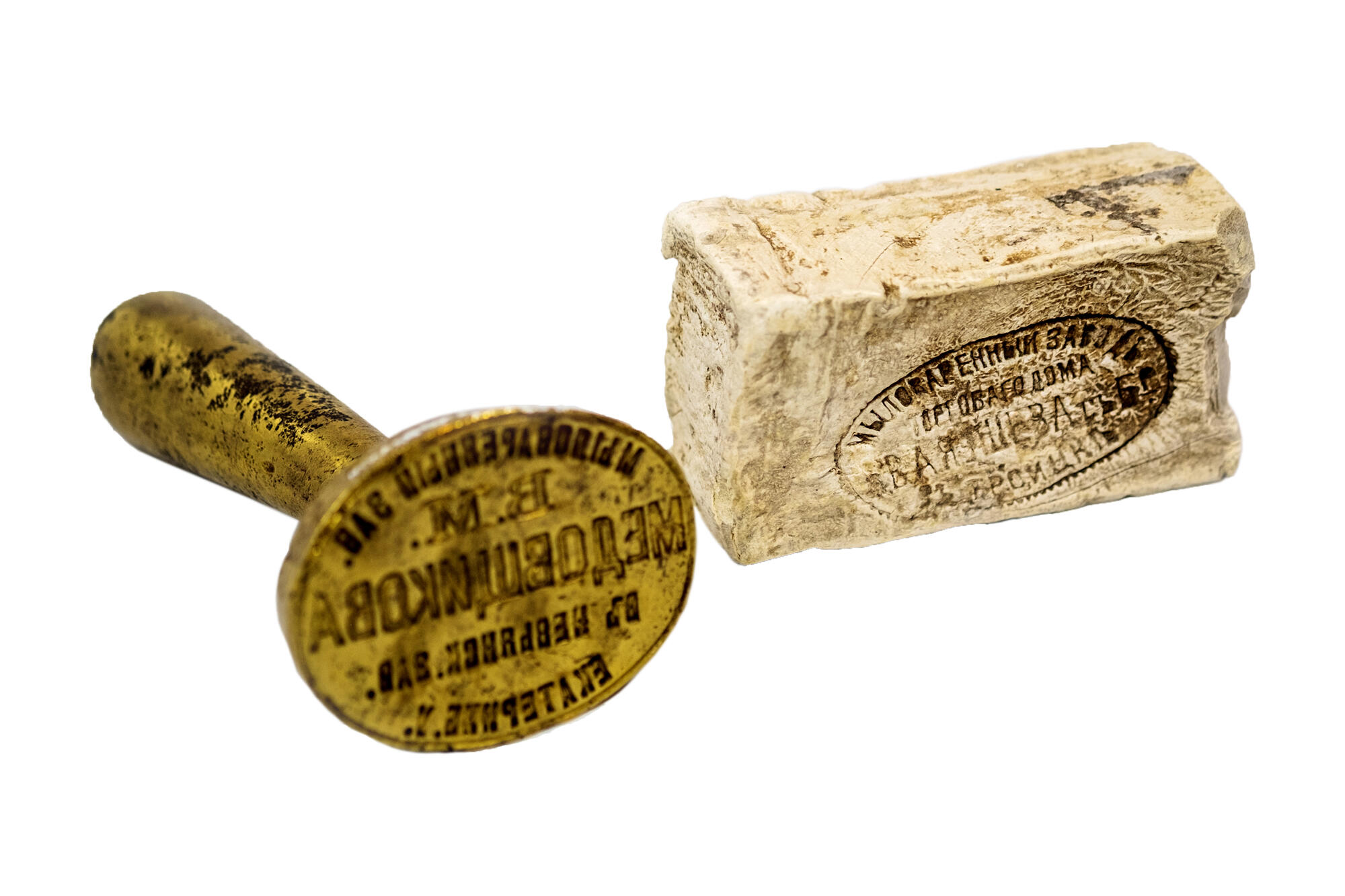In the late 19th century, several soap-making enterprises operated in the Nevyansk plant. Each of them had its own stamp to mark the products. The stamp kept in the Nevyansk Historical and Architectural Museum belonged to Medovshchikov’s soap factory.
Soap factory stamp and soap
Creation period
Early 20th century
Dimensions
11.5 cm × 6.4 cm × 5 cm. Brand: height: 16.5 cm, diameter: 9 cm.
Technique
Soap: soap making, press molding. Stamp: copper alloy, casting
Collection
6
Open in app#1
Soap factory stamp and soap of the Vakhrushev factory
#21
#22
The soap on display was found during the demolition of an old house and donated to the museum. It was made in the city of Troitsk, Orenburg Governorate.
#23
Russian industrial soap-making owes its development to Peter the Great. However, until the middle of the 19th century, soap in Russia was produced only for the nobility and was very expensive. Peasants and craftsmen washed their clothes and themselves with lye: wood ash, mixed with boiling water and steamed in the oven.
#24
Soap became widespread only in the second half of the 19th century, when Henri Brocard opened his plant. At first, it was located in a stable, only to evolve into a full-fledged factory later. Brocard produced “popular soap” at a price of one kOpeck per piece, and cheap baby soap, on the packaging of which the letters of the alphabet were printed. Another innovation introduced by Brocard was the unusual appearance of the products: for example, he produced the Cucumber soap, which looked like a real vegetable. Over time, soap production, both in factories and hand-crafted, spread throughout Russia.
#25
Soap in the Nevyansk plant could be bought at a fair or a market. Big fairs were organized twice a year: in the summer, at the end of June, the Petrovskaya fair was held, and in winter, at the end of December, the Aleksandro-Nikolaevskaya fair. Markets took place weekly, on Sundays. The market square of Nevyansk was dotted with numerous stands. On the right bank of the Neyva River there were bakery and butcher stands, “gluttony row”. Not only residents of the surrounding villages came here to buy and sell their goods, but also traders from many cities of the Urals, Siberia and Central Russia. Successful trade was facilitated by the convenient location of Nevyansk, between Yekaterinburg and the Nizhniy Tagil plant, as well as by the presence of the Siberian Railway and the Ural Mining Railway, which connected Nevyansk with the Urals and Western Siberia.
#26
State Autonomous Cultural Institution of the Sverdlovsk Region "Nevyansk State Historical and Architectural Museum"
read morehide
00:00
00:00
1x
Soap factory stamp and soap
Creation period
Early 20th century
Dimensions
11.5 cm × 6.4 cm × 5 cm. Brand: height: 16.5 cm, diameter: 9 cm.
Technique
Soap: soap making, press molding. Stamp: copper alloy, casting
Collection
6
Open in app
Share


